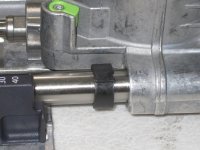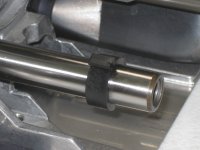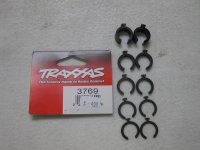neilc said:
Kev
That was an interesting alternative approach to 'reserve' tools.
But it does not get around them having to carry inventory, that for some toolmakers is 'risk'.
I just went to the one-time tool page on Woodpeckers and did a quick TOTAL of all the one time tools they offered in 2013. The total for all the tools and the various SKU's - english, metric, options, accessories, etc - was over $10,000. Yes, even I was surprised at that number. If we assume their manufacturing costs - materials and labor were 1/2 of that, that's $5000 in investment that Richard would have made to carry that inventory.
That's quantity ONE of all the tools and configurations they offered as one time tools for 2013.
Would you carry that inventory in return for a potential client giving you a check for $200 for them potentially buying it at some point in the next year?
Now, if you are a cabinet maker, installer or furniture maker, would you build out a room full of cabinets or furniture in hopes that a customer would come along and buy what you had made, or would you rather wait for them to give you an order, and then order your materials and plan your labor schedule?
I think that's the mindset toolmakers like Woodpeckers and Bridge City have in coming up with these business models - they operate a small business, in a tight credit market, with a fickle customer base and some would argue a declining available market.
So they choose a business model with minimum inventory and capital at risk.
I have taken Marc Adams School of Woodworking classes from John Economaki at Bridge City tools. I recall him sharing what happened to his business on September 11, 2001 - it evaporated overnight - and he had a significant challenge with over 50 employees and a warehouse full of tools and raw materials.
He faced a similar situation of business shortfall with the financial crisis in 2008, though not as severe since he did not have a manufacturing staff or a lot of finished inventory.
That's why he changed the model in order to survive risks beyond his control.
So I understand and sometimes feel the frustration you and others may have with the program and business model that these tool makers have - but I'd rather them be solvent and producing great tools that I want but have to wait for than not producing them.
Many craftspeople on the forum are in the 'build to order' model with how they run their businesses. The tool makers do the same thing.
neil
Neil,
There you have it - "build to order" would be fine, but it's not offered. It's buy it now whether you think you need it or not, otherwise miss out forever. That's more like a ransom model than a build to order model. I'd have no issue with the approach for art or collectables - but they're tools for a purpose.
Frustration? Yes, of course. Why else would I spend the time trying to CONSTRUCTIVELY explain why it doesn't work for me and why it doesn't (I'm not unique).
It seems no matter how much I stress the issue, there's someone that would rather defend the model rather than simply acknowledge that it doesn't work for many people. I just happen to be someone making noise about it - so many would just ignore it and it would never be apparent.
If I could make a few obvious points ....
1. Woodpeckers tools are really cool and there's far more potential demand for them over time than they are willing to support due to their limited cash flow and flexibility.
2. If their tools were possibly a little cheaper and more readily available, more would be sold across the globe.
3. Business people in "low cost production ready" economic locations are always looking for opportunities and "knock off" targets.
4. "Demand" has a habit of being satisfied ... it's a basic economic principle.
Rather than see Woodpeckers evolve, would you prefer that their tools were copied by a Chinese manufacturer and sold more cheaply round the world and grey marketed back into the US ... likely sending Woodpeckers out of business?
Now I really hope you don't think I'm stupid enough to expect an organisation to mortgage $5,000 worth of inventory based on a token $~200 club fee ... a soft commitment model and a logical bit of math and policy would come in to play. Obviously!! There's tons of options, including holding deposit models ... $5 for a month for a specific tool, $15 for a quarter etc, etc if they still want to play those non standard sort of go to market games. I could rattle of a dozen different scenarios.
I deal with with massive institutions on a daily basis, full of people telling me why something isn't possible and it take weeks and months to make them realise alternatives exist. This is no different. Alternative exist, change is possible.
I really can't comprehend why people focus only on explaining why something is the way it is and how it has to stay that way because, because, because ... Things are always the way they are because of a series of events, decisions, circumstances, etc. That doesn't eliminate the opportunity to improve. Also, most importantly, you have to anticipate change. Not doing so is the reason most people and organisations fail.
Enough soap box for me today. [wink]






